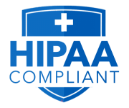In the ever-changing world of education, the move toward digitizing student records represents a significant leap forward. Embracing digital platforms to convert these records opens opportunities for educational institutions, administrators, teachers, and students alike.
As schools embrace digital changes, the advantages are more than just convenient. It marks a shift to a more empowered, flexible, and tech-driven education system.
The Evolution from Paper Trails to Digital Archives
Traditionally, educational institutions have managed vast volumes of paper-based records, from admissions documents to academic transcripts, student forms, and more. This reliance on physical records posed challenges regarding storage, retrieval, and accessibility. Enter digitization—a game-changing technological solution reshaping the educational landscape.
Let’s examine how student record scanning can increase accessibility and efficiency.
Enhanced Accessibility and Efficiency
Digitizing student records revolutionizes accessibility and efficiency within educational settings. Administrators and educators gain immediate access to a comprehensive student information repository by migrating from traditional paper-based records to digital formats.
This transition frees them from the constraints of physical record-keeping, offering a seamless retrieval process for enrollment forms, academic transcripts, attendance records, and more.
The accessibility afforded by digital archives expedites data retrieval, alleviating the burdens of labor-intensive administrative tasks and significantly enhancing operational efficiency.
Optimized Workflows and Resource Management
Integrating sophisticated document management systems optimizes educational workflows to a significant extent. Manual paperwork becomes unnecessary with this modernization, leading to more efficient processes that save time and manage resources better. Scanning large documents into digital formats reduces the need for vast physical storage, optimizing resource use in educational institutions.
Empowering Collaboration and Communication
Digital archives aid educators and administrators in collaborating effectively. They enable instant sharing and updating of records between departments, improving communication and promoting a unified method of managing student records. This collaboration helps understand student needs better, track academic progress, and identify areas needing support, thereby enriching the educational experience.
Data Security and Integrity Assurance
Digitization tackles security concerns regarding student records. Document management systems provide security measures like encryption, access controls, and backups. This enhances data security, compliance with privacy regulations, safeguarding student information from unauthorized access or loss, and building trust among educational stakeholders.
Future-Proofing Education and Innovation
Using digital platforms for student records is more than a trend; it’s crucial for future-proofing education. Institutions adopting digitization prepare themselves for upcoming technological advancements and changing teaching methods. The flexibility of digital archives enables institutions to adapt effortlessly to educational innovations and changes.
Enhanced Data Analytics
Digitizing student records enables advanced data analytics. Storing data digitally allows educational institutions to use tools for valuable insights into student performance, enrollment trends, learning patterns, and administrative operations. This analysis helps make informed decisions, personalize learning, and improve educational outcomes.
Reduced Risk of Document Loss or Damage
Digitizing student records reduces the risk of document loss or damage. Physical documents are vulnerable to wear and tear, misplacement, or disasters like fire or floods. However, by converting records into digital formats and storing them securely in the cloud or on reliable servers, educational institutions safeguard these documents against physical threats.
This ensures records are preserved and accessible, lessening the risks of potential loss or damage.
Space and Cost Savings
Digitization provides significant space and cost-saving benefits. Physical storage requires a lot of space and costs for infrastructure, maintenance, and document management. Moving to digital archives removes the need for extensive storage, reducing related expenses. This optimization also frees up space in educational premises for better use, leading to long-term cost efficiency.
Improved Record Security
Digital archives enhance the security of student records significantly. Traditional paper-based records are susceptible to unauthorized access, tampering, or theft. On the contrary, digital document management systems offer robust security features like encryption, access controls, and audit trails.
These measures strengthen the confidentiality of student information, ensuring adherence to data privacy regulations and fostering trust in the security of sensitive records.
In short, beyond accessibility, efficiency, and collaboration, digitizing student records offers many additional advantages. It empowers institutions with advanced data analytics capabilities, safeguards against document loss or damage, facilitates space and cost savings and fortifies record security, ultimately contributing to a more robust and efficient educational ecosystem.
Bottom Line
The digitization of student records represents not just a technological shift but a revolution in educational efficiency and accessibility. This transformation fosters collaboration, fortifies data security, and paves the way for a more agile and responsive educational landscape, benefitting administrators, educators, and students alike. As education ventures into an increasingly digital era, the move towards digital student records serves as a cornerstone for progress.
Explore advanced student records scanning solutions for your educational institution. Find tailored digitization services to streamline record management today at Smooth Solutions!














